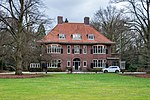Willem II (women)
2007 establishments in the Netherlands2011 disestablishments in the NetherlandsAssociation football clubs disestablished in 2011Association football clubs established in 2007Eredivisie (women) teams ... and 3 more
Football clubs in TilburgWillem II (football club)Women's football clubs in the Netherlands
Willem II Vrouwen was the women's football section of Willem II football club from Tilburg, the Netherlands. They were founder members of the Eredivisie Vrouwen in 2007. In February 2011 Willem II announced they were withdrawing support for their women's section, for financial reasons.
Excerpt from the Wikipedia article Willem II (women) (License: CC BY-SA 3.0, Authors).Willem II (women)
Ringbaan-Zuid, Tilburg Oud-Zuid
Geographical coordinates (GPS) Address Nearby Places Show on map
Geographical coordinates (GPS)
| Latitude | Longitude |
|---|---|
| N 51.542777777778 ° | E 5.0669444444444 ° |
Address
Ringbaan-Zuid
5025 SZ Tilburg, Oud-Zuid
North Brabant, Netherlands
Open on Google Maps











